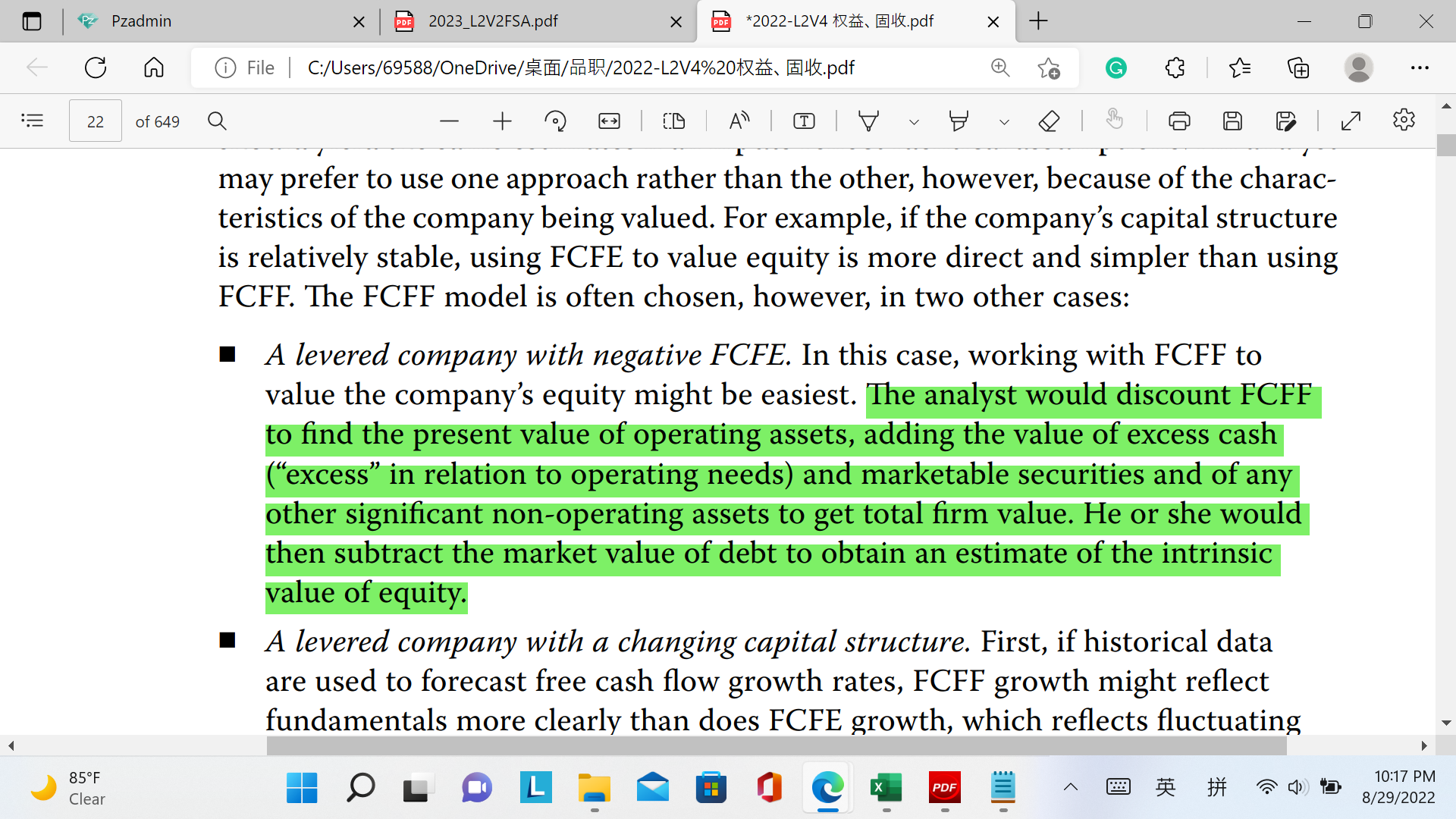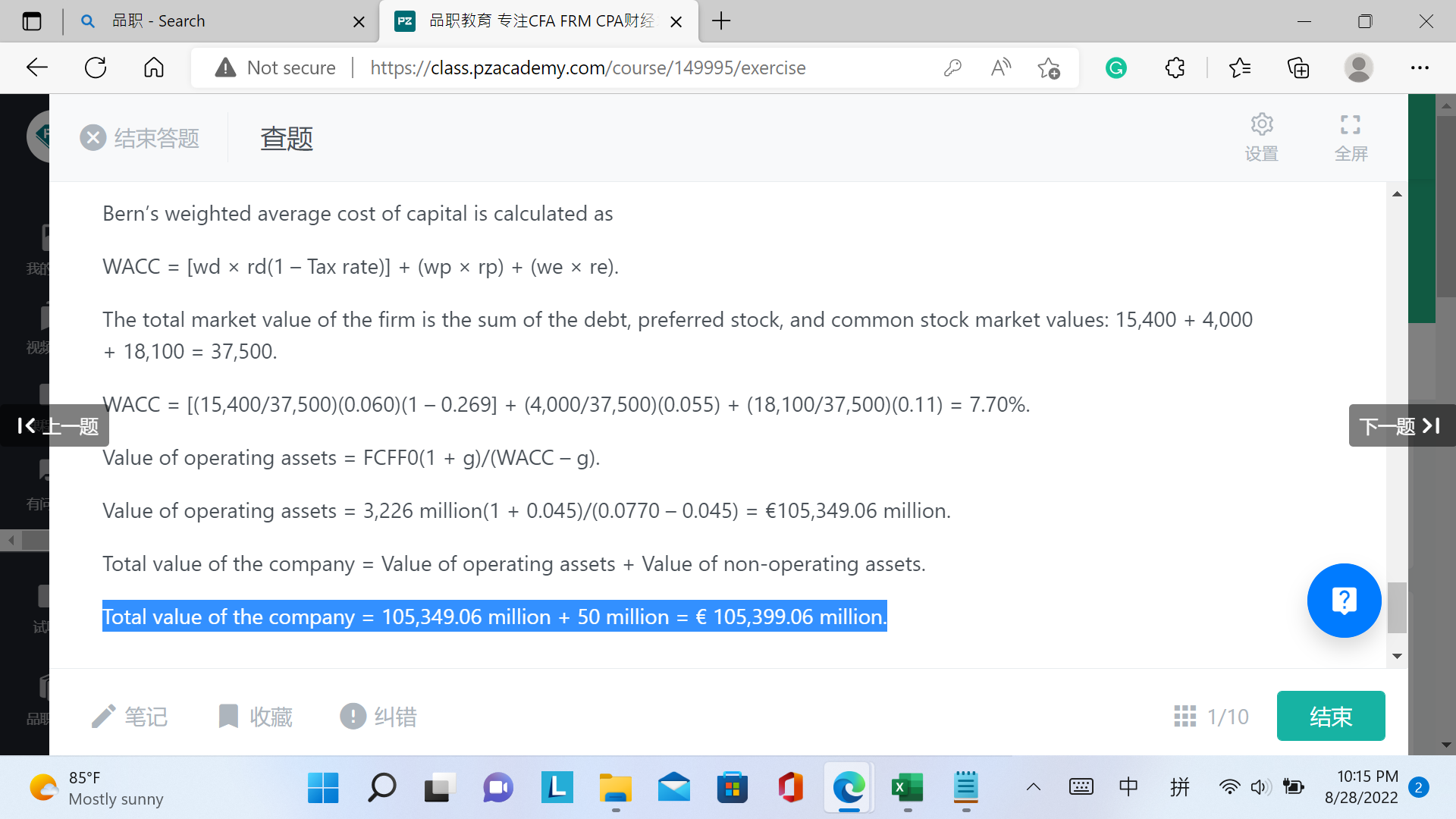NO.PZ201809170300000206
问题如下:
Based on Exhibit 4, Singh and Ho should conclude that under Scenario 2, shares of Bern are:
选项:
A.
undervalued.
B.
fairly valued.
C.
overvalued.
解释:
A is correct. The total market value of the firm is the sum of the debt, preferred stock, and common stock market values: 15,400 + 4,000 + 18,100 = 37,500 million.
WACC = [wd × rd(1 Tax rate)] + (wp × rp) + (we × re).
= [(15,400/37,500)(0.060)(1 0.269] + (4,000/37,500)(0.055) + (18,100/37,500)(0.11) = 7.70%.
Under the assumption that Bern has a low growth rate because it did not receive regulatory approval for its new drugs, the value of Bern can be analyzed using a two-stage valuation model.
Company value = 

The terminal value at the end of Year 3 is TV3 = FCFF4/(WACC g4).
TV3 = 3,398.66/(0.0770 – 0.0075) = €48,901.58 million.
The total value of operating assets = (3,040.37 + 2,865.42 + 2,700.53) + 48,901.58/(1 + 0.0770)3 = 8,606.32 + 39,144.95 = 47,751.27
Value of Bern’s common stock = Value of operating assets + Value of non-operating assets – Market value of debt – Preferred stock = 47,751.27 + 50.00 – 15,400 – 4,000 = €28,401.27
Since the current market value of Bern’s common stock (18,100 million) is less than the estimated value (28,401.27 million), the shares are undervalued.
情景1计算出来的价值没有包括企业非经营资产50,那我们要加上去才是企业完整价值。 同样的用情景二,我们计算出来的企业价值应该也是没有包含50呀。所以我们在倒算普通股的估值时候,为什么又要减去50呢?这不是多减了吗?






